The immensely rich socio-cultural heritage that is India’s strength and pride, time and again surfaces to confront one to the fact of how little do we know of our past! And so it was with Kathak villages! When we accidentally learnt of their existence, it opened new doors of discovery of a community of people and of temple traditions that existed right under our noses but of whom we were unaware. In this article we shall dwell on Kathakvillages, the KathakLok and the living temple tradition of these KathakLok.
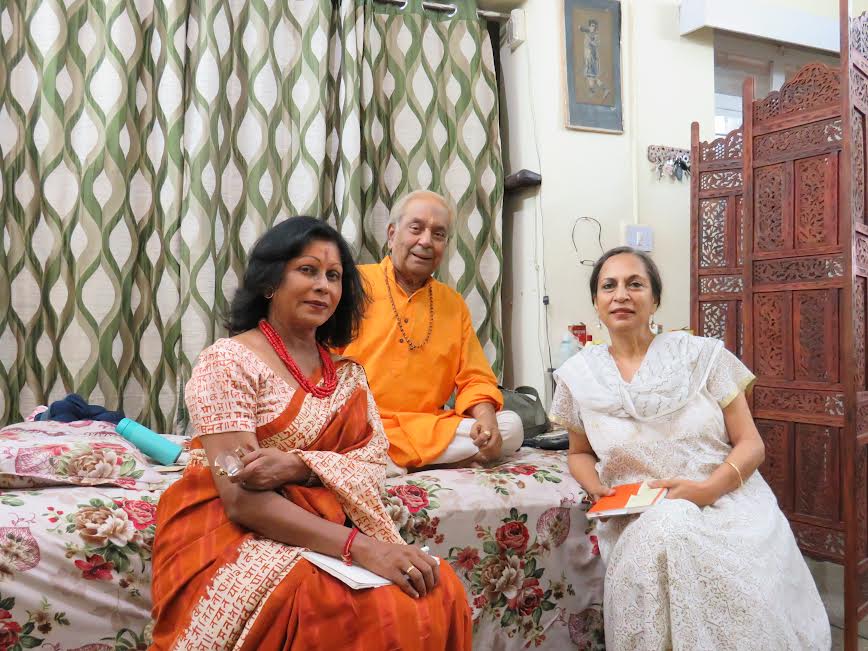
A decade after hearing of villages named ‘Kathak’ near Bodh Gaya and then confirming their existence through census records, we set out to understand why these villages were called Kathak. In the course of the next 5 years, we clocked over 7000 kilometres, journeying into deep recesses of UP, Bihar and Rajasthan. Of the 19 Kathak villages listed in UP And Bihar, we visited 14. Some of them were uninhabited or gair-chirag’ (ie without a lamp),in a few, the original pundit Kathak community after whom the villages had been named, had migrated elsewhere. A small number however, had the original settlers – the ‘KathakLok’ still residing there.
(The list of the 19 Kathak villages with their village codes and locations are given as Annexure 1at the end of the article).
Our aim was to find the reason behind this unusual name of villages, also who were the inhabitants , what was their professions and whether they had any bearing or connection to the Kathak dancers of urban areas that we are so familiar with. Our focus, was not to locate or prove whether any state was the point of origin of Kathak dance nor to glorify any gharana or undermine the contribution of any gharana.
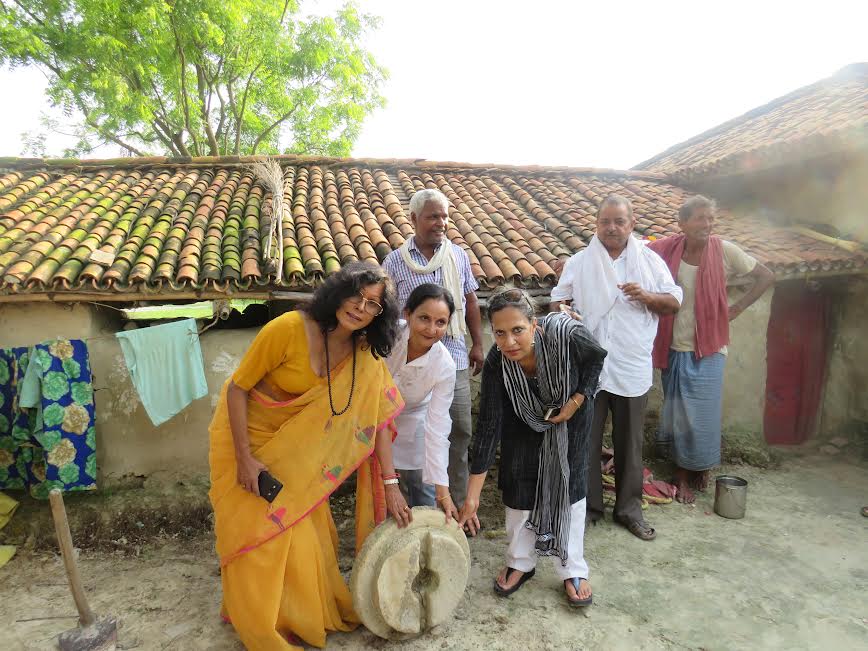
We were aware that the writing of Indian history in the twentieth century had been infused with a spirit of nationalism and search for identity. Conscious efforts had been made to trace the roots of Indian art to Vedic origins, either factual or imaginary. In the field of dance, those dance styles that went first past the post, in imbuing themselves with roots in the haloed Natyashastra[1], were considered to be the oldest, most ancient and therefore ‘most Indian’. Kathak dance, however, was absent from this earnest quest. Its exponents never made any claims. Our quest, therefore, had to begin with visits to the Kathak villages to see for ourselves, what was in plain sight yet unknown to most, including Kathak dancers.
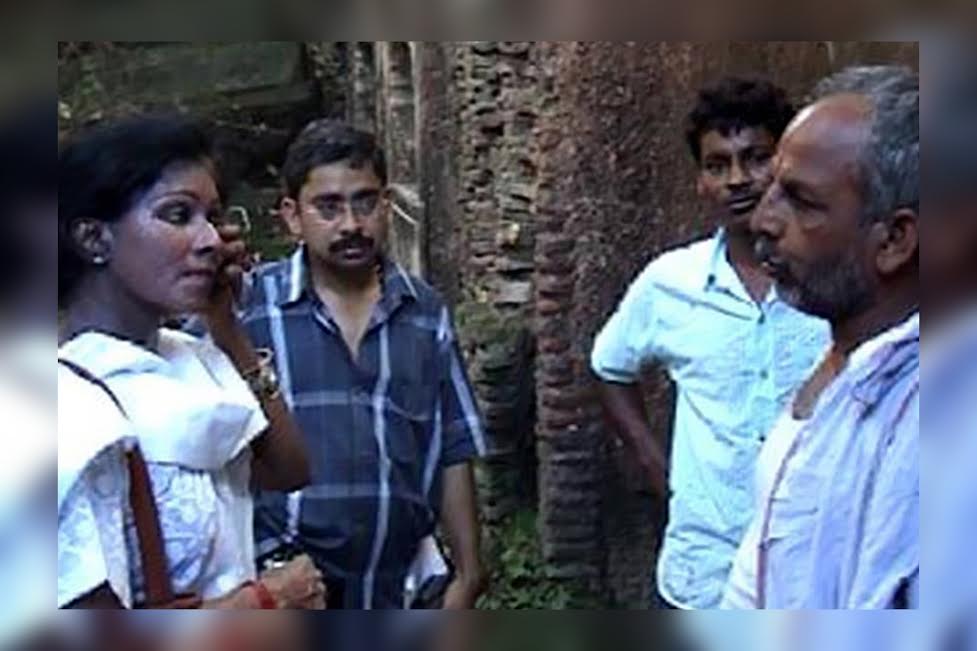
Acutely aware that narrative paradigm is all-encompassing; care was taken to ensure that the narrative of which oral tradition and historical memory were paramount, were rational and coherent. They were painstakingly matched with available collateral evidence and supporting documents such as ancient Sanskrit texts, records available in archives, discussions with epigraphists, scholars, swamis and maharajas. Statements of several villagers, officials and general public were coalesced with as much fidelity as could be had to ensure that the picture that emerged had consistency with sufficient details.
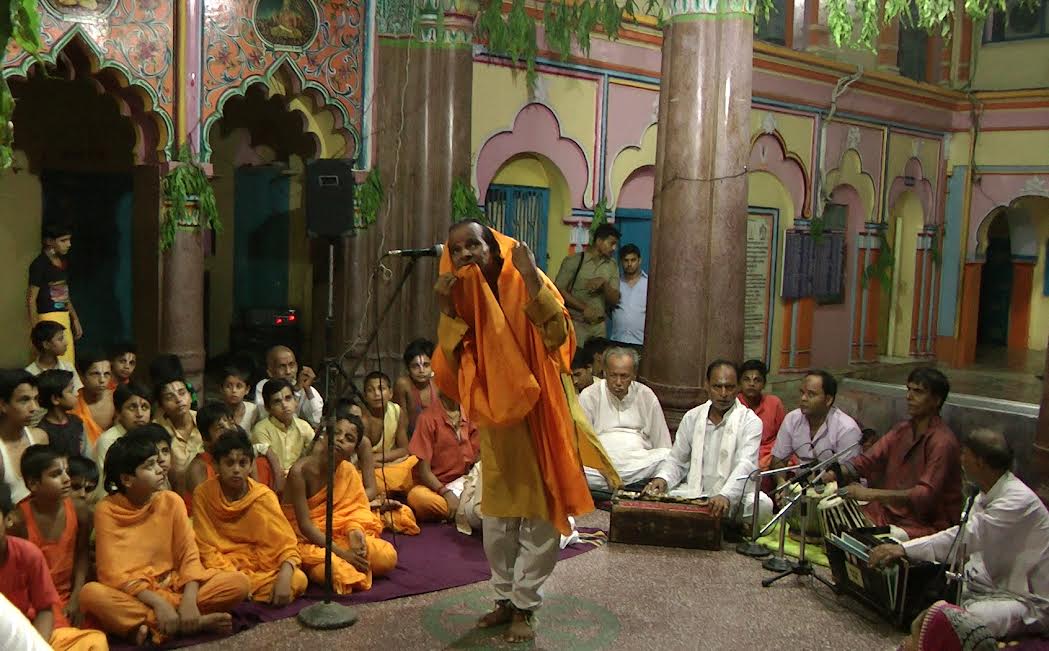
Location of Kathak villages: Before commencing our journey into the interiors of UP, Bihar and Rajasthan, we marked the location of the Kathak villages on a map and were really surprised to notice that the villages were located around the town of Jhusi, earlier called Pratishthanpur or Pratishthana. This created incredible excitement as Pratishthana is mentioned in the Devi Bhagwat Purana, and also in the Natyshastra which refers to Nahusa as the ruler of Pratishthanpur, thereby opening the first probability of a historic connection! According to Chapter 36 of the Natyashastra, it was in Pratishthanpur that the dramatic arts first descended to Earth in the town of Pratishthanpur. Today all Kathak villages are located around this ancient town, could it be a coincidence or could there be some truth hidden in the mist of time.
[1] Treatise on dramaturgy ascribed to Bharat Muni. In the MM Ghosh translation of the NS, published by Asiatic Society, in Introduction, VIII, The Date of the Natyashastra, pg LXXXI to LXXXVI,the view is that the Natyashastra, had been compiled sometime between 100 BC and 200 AD. Yet in the later edition of the Natyashastra, it is stated that “We may, therefore, place the NS in about 500 BC; for Bhasa probably wrote his plays between 450 and 350 BC”.
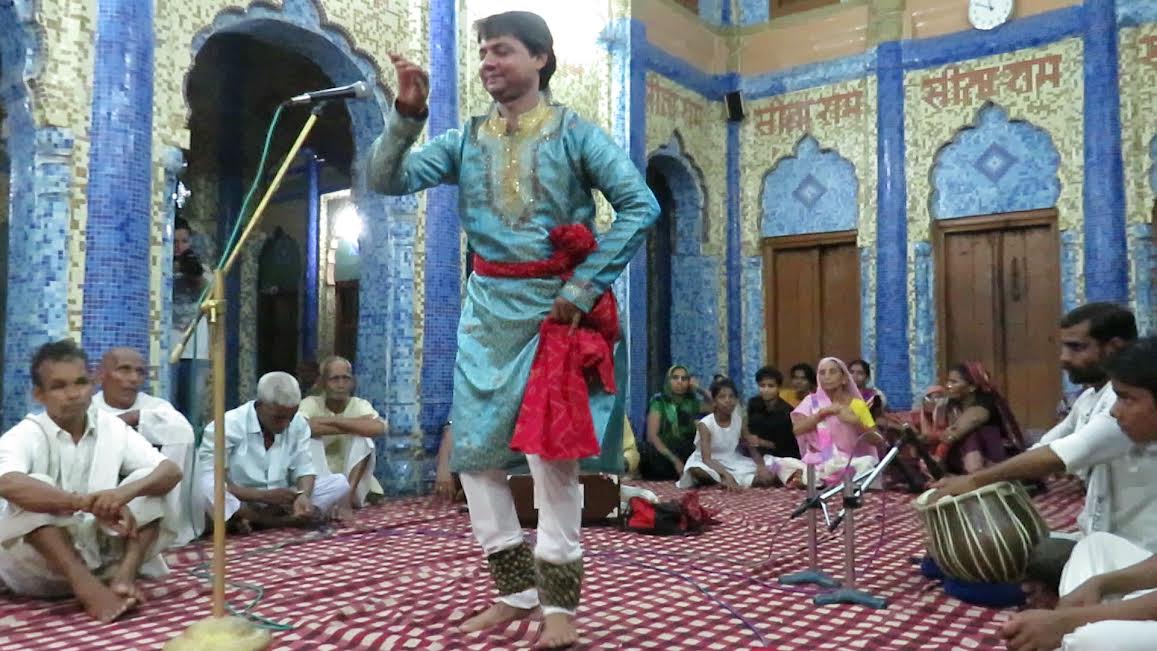
The fact that all the Kathak Villages and KathakLok[1] are located around the ancient Pratishthanpur, currently Jhusi, intrigued us. Furthermore, the land records of Handia Tehsil mention a large lake named Kathak Tara. Also the stalwarts of Lucknow gharana trace their ancestry to Handia tehsil, which is just 30kms from the ancient Pratishthanpur!
[1] The term KathakLok is being used in place of Kathak Log so as to distinguish the English term “log” from the people “Log”.
Setting up of Kathak villages: Our meetings with the villagers and the reading of land records showed that the villages called ‘Kathak’ were named after the community (Kathaklok) to whom the village land had been given as a grant or jagir, either the local ruler or a prominent landlord. The size of these jagirs indicated the status of this community and the respect that they once commanded. One of the jagirs, Kathakjagir, was of 100 acres.[1]Today, however, very few of the Kathaks hold lands, if they do their holdings are very small
[1]JagirKathak,In Thana 320.
The KathakLok: is a community of Brahmins who did Katha using parables and verses from the epics, the sayings of saints and the vast trove of Hindu mythology. They gave didactic messages with dance, mime and music. They performed this service regularly in temples and during religious festivals. In their rendition they explained dharma through ‘kavya’ (verse) and were thus carriers of the tradition of KantaSammitUpdesh, which is an ancient method of doing Katha as mentionedin the 11th century by Mammat in Kavyaprakash[1].
काव्यंयशसेर्थकृतेव्यवहारविदे शिवेतरक्षतये
सद्य: परनिर्वृतयेकान्तासम्मितयोपदेशयुजे
(काव्यप्रकाश, कारिकावली,काव्यलक्षणम,Chapter 1, श्लोक 2, 11 शताब्दी)
(kavyayashaserthakritevyavahaaravideshivetarakshataye
Sadya: paranirvritayekaantaasammitatayopdeshayuje
(Kavya Prakash, Karikavali, KavyaLakshanam, Chapter 1, verse 2, 11th century)
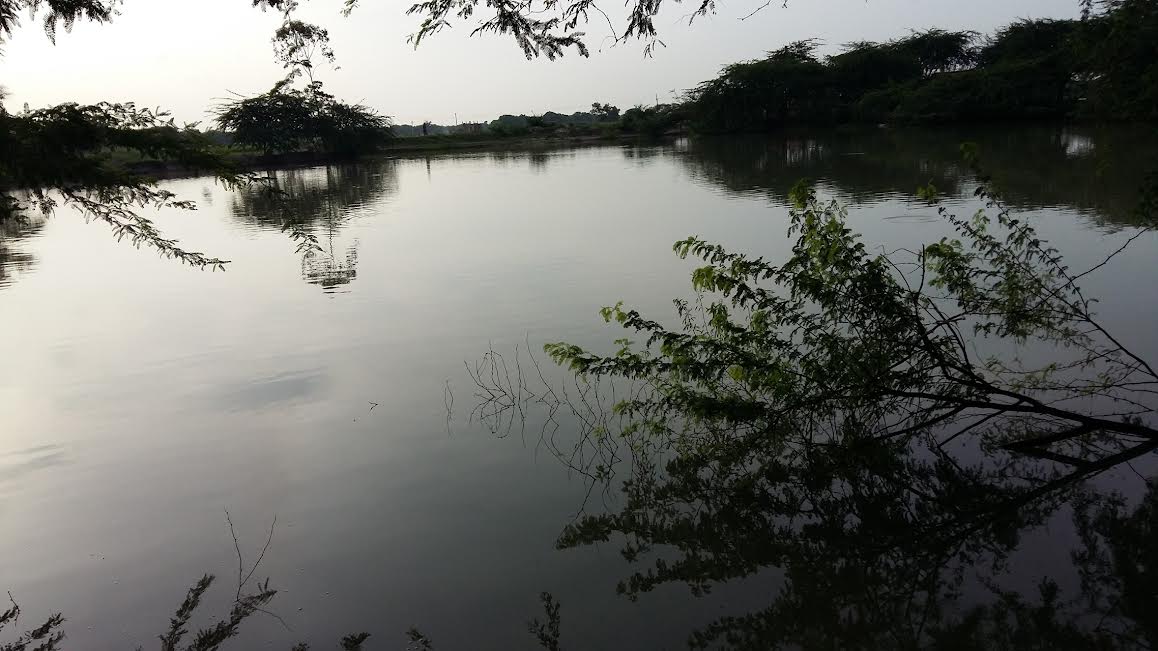
‘Kavya’ (verse) joins one to fame, wealth, and promotes knowledge of behaviour, removal of ignorance, protection from sorrow, ushering in happiness through KantaSammitUpdesh.
Living Temple Tradition of KathakLok: At Ayodhya, we came face to face with this still living tradition of the KathakLok. We were fortunate to see the ‘nrityasewa’ of eight Kathaks in seven temples. The role of theKathakLok was two-fold. On one hand they sang to worship the deity, on the other they sang and also danced to the verses in a way that explained the verse to the audience. It was only the male Kathaks who mastered ‘natya’ – singing, dancing, music instruments and drama, and used their skill to elucidate the text to the devotees. In enactment by the Kathaks, they first sang sacred verses, then explained their literal meaning, followed by a brief dance depiction of the verses. This is followed by a more detailed philosophical interpretation of the text and then again by abhinaya. Short rhythmic pieces comprising ‘tukra’[2], ‘tatkar[3]’ and ‘tihai[4], were performed after every few sequences of ‘abhinaya’.
Background of this ancient community: Aware that corroboration of oral narratives are important from other sources and streams of enquiry, in documentation, the reference to Kathaks in the Mahabharata’s Adiparva was examined.
कथकाशचापरेराजन्श्रमनशचवनौकस:
दिव्याख्यानानियेचापिपठन्तिमधुरमद्विजा:
(महाभारत, आदिपर्व, १: २०६: ३)
Kathakāścāparerājañśramaṇāś ca vanaukasaḥ
divyākhyānāni ye cāpipaṭhantimadhuraṃdvijāḥ
(Mahabharata, Adiparva, 1: 206: 3)
[1]Mammata’sKavyaprakash, Karikavali, Definition of Poetry,Chapter 1, Verse 2
[2]Tukra is a short rhythmic pattern devoid of bols (syllables) of the mridanga (pakhawaj)
[3]Tatkar is footwork.
[4]Tihai is a rhythmic pattern that is repeated thrice.
To read the full article kindly subscribe to the Magazine…





